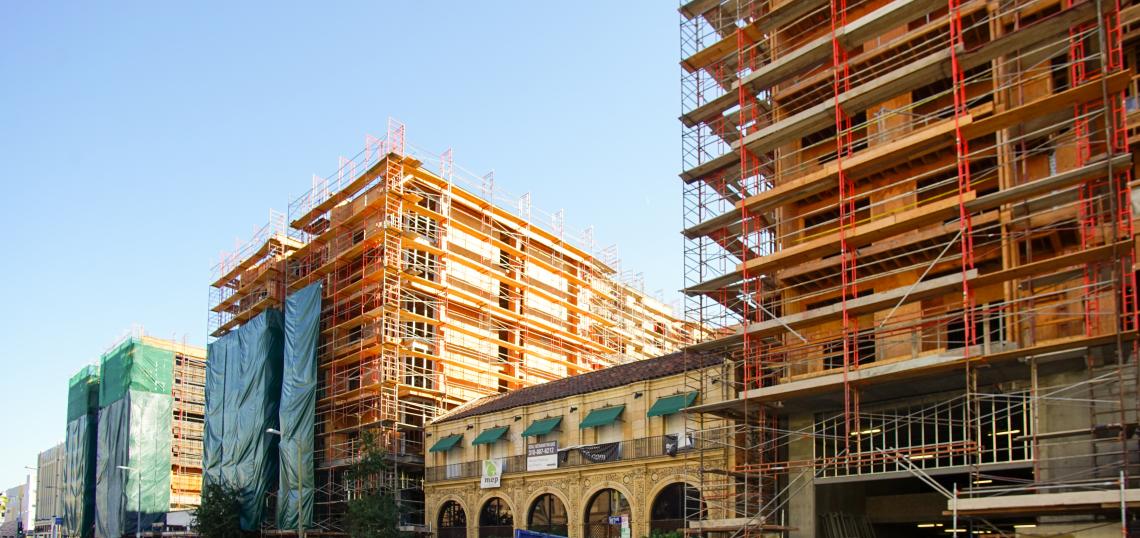In the early hours of December 8, 2014, Downtown Los Angeles awoke to a chaos, as emergency personnel converged on a massive fire at an under construction apartment complex adjacent to the Hollywood and Harbor Freeways.
The wooden framework of the Da Vinci, a development by Geoff Palmer, was destroyed in spectacular fashion by an act of arson which lit up the night sky. When the flames were finally quelled later in the morning, all that remained of the seven-story structure was its concrete base and steel staircases.
Although two years have now passed, and the apartment building has been rebuilt and completed, the fire has prompted cornerns about wood frame construction from Los Angeles City Councilmember Bob Blumenfield.
A motion from Blumenfield, which will be considered at this week's meeting of the Council's Planning and Land Use Management Committee, calls upon the Planning Department, Department of Building and Safety, Fire Department and Bureau of Engineering to provide clarity on City's policies on wood-fram econstruction.
Specifically, Blumenfield makes the following queries:
- At what size does wood-frame construction no longer make sense for residential buildings?
- Multi-family buildings of four-stories or less permit wood-framing by code. However, four-story commercial buildings are not allowed to be wood-framed. What explains this and what are the reasons?
- Wood is a fire hazard in high occupancy buildings, therefore, why does the city permit large residential projects to be built with wood?
- Should there be a housing density limit that will trigger the use of steel, and better fire separation between units?
- Is a 20-or-30-unit building the maximum that should be permitted for wood-frame construction, and should this maximum criteria be codified in city codes?
- Should the height limit for wood-frame construction be reevaluated?
- What explains the intensity of the fire at the apartment complex, inasmuch as it went up like match sticks?
- What are the best policy solutions the city can enact as to the permitting and inspection process to prevent future fires at under construction development projects?
Answers to the final two questions may be provided by the City's $20-million lawsuit against Palmer in response to the fire, which alleges that the Beverly Hills-based developer failed to implement proper construction safety measures at the Da Vinci site.
According to City Attorney Mike Feuer, these shortcomings include: "failing to have an appropriate fire protection plan; failing to compartmentalize construction; failing to property install fire walls or doors; having an appropriate water supply for fire suppression; and failing to have appropriate security measures that would prevent incursion by unwanted individuals."
- Wood Frame Construction (L.A. City Clerk)
- Construction Resumes at Da Vinci After Massive Blaze (Urbanize LA)







